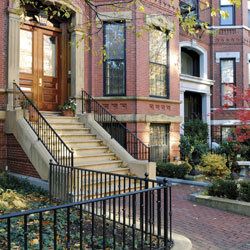Planning for Sustainable Communities

In the second half of the 20th century, the American Dream was realized in sprawling suburbs accessible only by car. Today, around the world, governments, developers and consumers are looking for a new dream: sustainable, interactive communities that can adapt to a changing environment.
The quest for sustainability is exerting an influence over almost every aspect of how we interact with our environment—and land use planning is no exception. The form and location of each new development determines how much greenhouse gas it will produce in the future, and therefore, its potential impact on the environment.
Ideally, environmental factors would be a key determinant in all land use planning decisions. But the land development industry has always been conservative by nature and needs to undergo a paradigm shift before it fully accepts that environmental issues will play a key role in the future.
In many societies, land use planning is decided by an interconnected cycle of three groups: consumers, governing agencies and private sector developers. The dominance of each varies over time, depending on the political and financial context. The tables have turned on the private developer, who now needs to respond both to the consumer demanding a different product and to stronger regulation.
The Baby Boomers who were the first generation to grow up in the suburbs are now choosing where they want to live their golden years. Many are rejecting the isolationist attitudes of their parents and demanding more engaging urban environments where recreational and social opportunities are available. In addition, there is a growing awareness of the value of our natural environment and open spaces, as well as a general dislike of new development. Often the only way to appease local communities regarding development is to guarantee that it will be sustainable.
In the 20th century, the majority of large land use decisions in the U.S. were undertaken by the public sector. Today, however, many large landowners, such as natural resource companies, are realizing that their land may be highly valuable for urban growth.
We are on the way toward a situation where the quest for sustainability will drive the way we plan our new cities and towns for the future. This is our vision for the future—developments that people want to live in, that allow for healthy interactive communities that can flourish in a changing world. iBi

